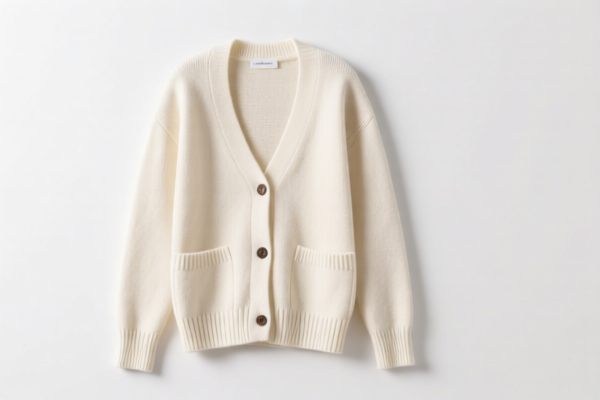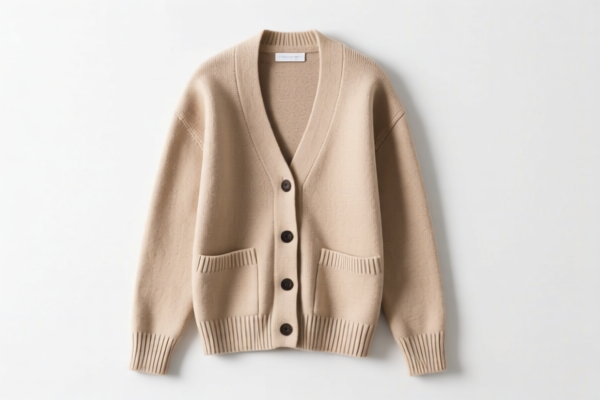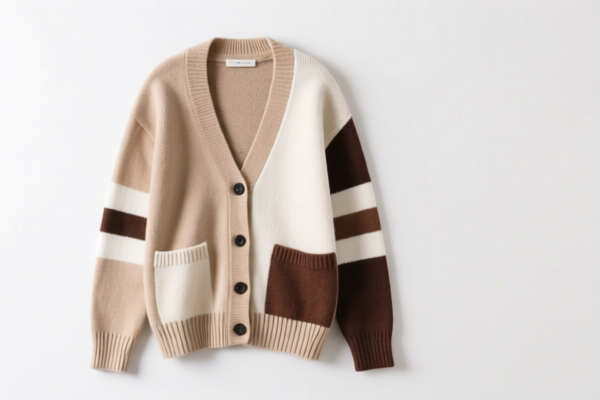| HS Code | Official Doc | Tariff Rate | Origin | Destination | Effective Date |
|---|---|---|---|---|---|
| 6110190030 | Doc | 53.5% | CN | US | 2025-05-12 |
| 6110909090 | Doc | 43.5% | CN | US | 2025-05-12 |
| 6114900540 | Doc | 49.5% | CN | US | 2025-05-12 |
| 6114909010 | Doc | 35.6% | CN | US | 2025-05-12 |




Women's Cardigan
A cardigan is a type of knitted sweater or jacket that opens at the front. It is typically fastened with buttons, a zipper, or a belt, but can also be worn open.
Material
Cardigans are made from a wide variety of materials, including:
- Wool: Provides warmth and is naturally water-resistant. Different types of wool (Merino, Cashmere, Lambswool) offer varying levels of softness and warmth.
- Cotton: Lightweight and breathable, suitable for warmer weather.
- Synthetic Fibers: Acrylic, polyester, and blends offer affordability and durability.
- Silk: Luxurious and soft, often used for finer, dressier cardigans.
- Cashmere: Very soft, warm, and lightweight, but more expensive.
- Blends: Combinations of fibers are common to balance properties like warmth, softness, and cost.
Purpose
The primary purpose of a cardigan is to provide warmth and a layer of clothing. They are versatile garments used for:
- Warmth: Added insulation in cooler weather.
- Layering: Easily worn over other clothing layers.
- Style/Fashion: A fashionable outerwear or layering piece.
Function
- Open Front: Allows for adjustable temperature regulation and easy layering.
- Closure Options: Buttons, zippers, or ties provide varying degrees of closure and style.
- Variety of Knit Styles: Different stitch patterns can create different textures and appearances.
Usage Scenarios
- Casual Wear: Everyday use, pairing with jeans, t-shirts, or dresses.
- Office Wear: Layering over blouses or dresses for a professional look.
- Travel: Easy to pack and versatile for varying climates.
- Evening Wear: Finer knit cardigans can be worn over dresses for a more formal occasion.
Common Types
- Classic Cardigan: Traditional button-down style, often in wool or cotton.
- Chunky Knit Cardigan: Thick, oversized knit, often used for casual warmth.
- Long Cardigan: Extended length, providing more coverage.
- Cropped Cardigan: Shorter length, often paired with high-waisted bottoms.
- Cardigan Sweater Dress: A cardigan that extends to dress length.
- Cable Knit Cardigan: Features raised cable patterns for a textured look.
- Open Front Cardigan: No buttons or closure, offering a relaxed style.
- Waterfall Cardigan: Features a draped front, creating a cascading effect.
- Shrug: A very short, cropped cardigan.
Women's cardigans fall under several potential classifications depending on their material composition. Here's a breakdown of relevant HS codes based on the provided information:
- 6110.19.00.30: This HS code covers sweaters, pullovers, sweatshirts, waistcoats (vests) and similar articles, knitted or crocheted, specifically those of wool or fine animal hair, categorized as other sweaters for women. The total tax rate is 53.5%, comprised of a 16.0% base tariff and a 7.5% additional tariff, increasing to 30.0% after April 2, 2025.
- 6110.90.90.26: This code applies to sweaters, pullovers, sweatshirts, waistcoats (vests) and similar articles, knitted or crocheted, of other textile materials, specifically sweaters for women or girls that are subject to cotton restraints. The total tax rate is 43.5%, consisting of a 6.0% base tariff and a 7.5% additional tariff, rising to 30.0% after April 2, 2025.
- 6114.90.90.10: This HS code covers other garments, knitted or crocheted, of other textile materials, specifically other tops. The total tax rate is 35.6%, with a 5.6% base tariff and a 0.0% additional tariff, increasing to 30.0% after April 2, 2025.
- 6114.90.05.40: This code applies to other garments, knitted or crocheted, of other textile materials, specifically of wool or fine animal hair tops for women or girls. The total tax rate is 49.5%, consisting of a 12.0% base tariff and a 7.5% additional tariff, rising to 30.0% after April 2, 2025.
It is important to note that the applicable tax rate for codes 6110.19.00.30 and 6110.90.90.26 will change after April 2, 2025, with the additional tariff increasing to 30.0%.
Customer Reviews
No reviews yet.